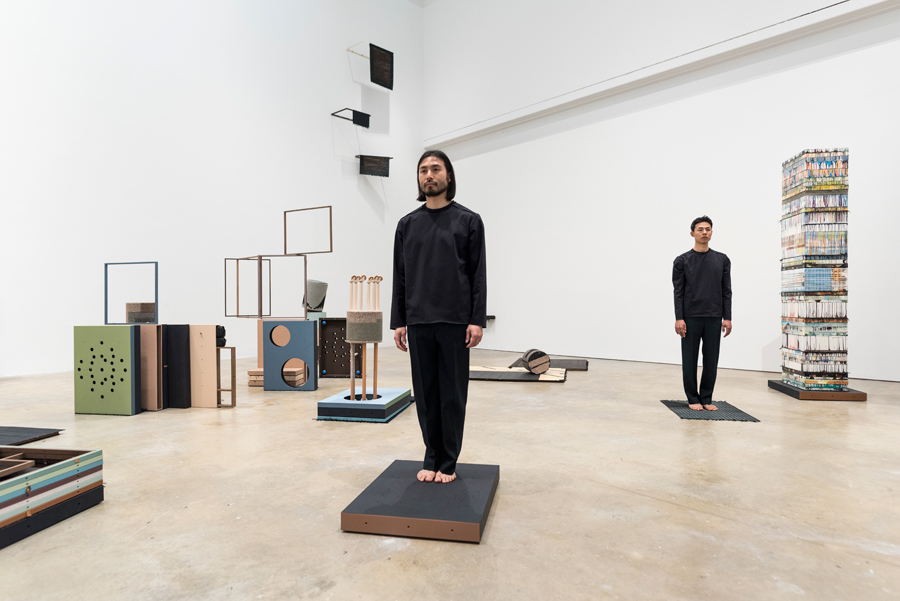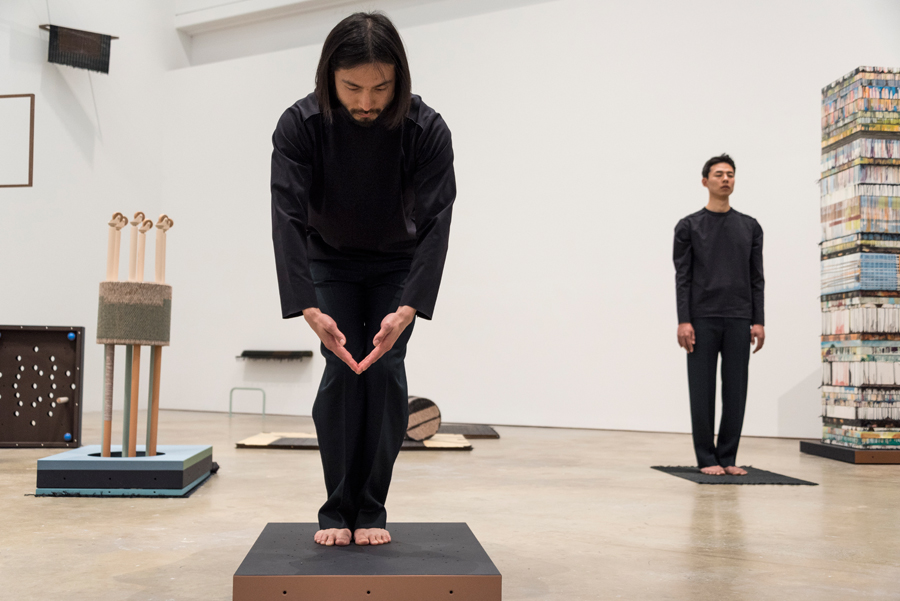In Perfect Harmony: Suki Seokyeong Kang’s Spatial Notation
With work in the Liverpool Biennial and ICA Philadelphia, the Seoul-based artist reanimates an ancient Korean musical system
With work in the Liverpool Biennial and ICA Philadelphia, the Seoul-based artist reanimates an ancient Korean musical system

The Golden Ratio might summon memories from an early art history or biology course: the geometric rubric for natural symmetry printed over photographs of a fern leaf or the face of a marble kouros figure. The ancient Greek measure of aesthetic ‘perfection’ profoundly affected Western art, calcifying biases for certain physiognomic traits in plants, animals and humans. What would a more inclusive system of measurement and notation look like – one that could also transcend the world of appearances, to structure sound and movement too?

That question appears to drive the Seoul-based artist Suki Seokyeong Kang, who has a new commission in the 2018 Liverpool Biennial, which opens to the public on Saturday. Central to her practice, which spans sculpture and installation, film and video, painting and performance, is jeongganbo, a unique system of musical notation invented by Sejong the Great (1397–1450), the Choson dynasty king who also invented Hangul, the modern Korean alphabet. Hangul employs phonemes rather than the orthographic symbolism of classical Chinese characters. Jeongganbo was also designed to be easier to learn and interpret: characters referring to specific tones appear in neatly gridded boxes, called jeong, whose singularity, or repetition, signifies the duration of each note. These can be multiplied endlessly, in a pattern both mathematical and pleasing to the eye.
Unlike Western music’s linear staff, jeongganbo translates music spatially, unfolding vertically and horizontally across a page. The notation system often scored music for the traditional female solo dance known as chunaengmu, a performance of tightly controlled movements on a woven reed mat, usually in the presence of royalty. In the titular installation of ‘Black Mat Oriole’, Kang’s current solo exhibition at ICA Philadelphia, these mats, trimmed with black fabric or soaked in dye, are double the size of the square jeong in her other sculptures – adding further spatial dimensions to the musical language. Kang’s jeong restrict the body physically, as required by courtly etiquette, even as they provide a platform for exalted forms of creative expression.

As spaces of both limitation and possibility, jeong seem like ideal units for a conceptual artist who transmits complex information through mute material. That challenge is physically invoked by the tactility of Kang’s sculptures, which the artist has fastidiously padded with bits of leather, tightly bound with coloured threads or smoothly painted in fleshy tones. Though their sculptural presence is subtle, and far from aggressive, animal skin trapped between their bolts and rivets facilitate their smooth movement, in another positive constraint. In these works, the rigour of traditional Korean music and dance is a kind of beautiful bondage.
Each hinged frame sculpture, drum or static mat serves as a silent instrument in performance ‘activations’, usually completed by choreographed dancers. In these activations – which took place in Kang’s show at ICA Philadelphia and recent solo exhibition at Tina Kim Gallery, New York – objects are placed in an unexplained arrangement, as if to form a poem or picture in space. At Tina Kim, their linear sequence recalled a line of text, reduced to geometric abstraction. Though jeongganbo can be read, Kang’s translations of the language refer to emotions and experiences that can be sensed but not precisely deciphered.

There is an ethereal, meditative quality to the eponymous film Black Mat Oriole (2017), also on view at ICA. Across the video’s three channels, hinged frames, perforated mats and cylindrical drums on wooden wheels appear in close-up or abstract tableaux on a darkened stage. Dancers gently roll or stack these forms in shifting compositions, each change marked by a loud clack, used to mark the movements of the body in chunaengmu. The video is opaque but visually mesmerizing, each slight motion and minimal surface articulated with a finesse that would floor Donald Judd.
Kang’s modular forms embrace a sculpture more connected to the human body than classic minimalism, with its heady phenomenology. Each square and circle takes its measurement from the artist’s own body, and guides the movements of her dancers. At both ICA and Tina Kim, canvases covered in drips, stacked to obscure their faces, formed tall towers. Kang completes a painting every day, and though only their sides are visible, they rise to meet, or double, the artist’s own height. The idea came from an earlier work, Grandmother Tower (2011–13), a stack of industrial dish racks wrapped in brightly coloured thread, which rises to the height of her deceased grandmother. The sculpture’s precarious curve mimics her grandma’s stooping posture while washing dishes – a loved one evoked tenderly in extremely formalist terms.

‘The grid announces, among other things, modern art’s will to silence, its hostility to literature, to narrative, to discourse,’ Rosalind Krauss wrote in her iconic 1979 essay ‘Grids’. Kang’s jeong, on the other hand, thrum with music – linking the artist’s favourite formal device to intimate parts of her own body and personal history. There is a utopian aspect to this form, which delineates personal space while allowing dancers and musicians to perform in unison. In jeongganbo, Kang seems to say, we might find a way to preserve our individuality and work better together.
‘Suki Seokyeong Kang: Black Mat Oriole’ runs at the ICA - Philadelphia until 12 August; The Liverpool Biennial 2018 runs from 14 July – 28 October.
Main image: Seoul-based performers Heyongjun Cho and Hongseok Jang conducting a special activation of artist Suki Seokyeong Kang’s work during opening weekend of ‘Suki Seokyeong Kang: Black Mat Oriole’, 2018, Institute of Contemporary Art at the University of Pennsylvania, Philadelphia. Courtesy: the artist; photograph: Constance Mensh






















